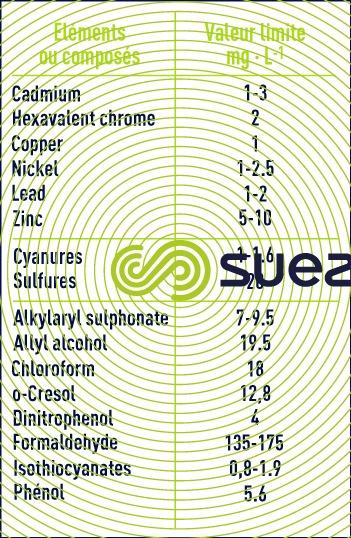harmful substances
Reading time:Like all living organisms, bacteria are sensitive to the presence of certain toxic or bacteriostatic substances. Above a specific dose, these substances inhibit the development of bacteria and reduce the effectiveness of any treatment based on their metabolism. They can be organic (phenols, alkylaryl sulphonates, hydroxylamine, etc.) or inorganic (heavy metals, transition metals, cyanides, sulphides, etc.). The table 9 provides an indication of the recognised toxicity thresholds for various substances used for aerobic biological purification.



The nature of toxic substances and their toxicity threshold varies depending on the type of bacteria involved (for example: all you need is 0.2 to 0.3 mg . L-1 of zinc to inhibit biological iron removal). In particular, it should be noted that the limit value for certain compounds can be largely increased through suitable acclimatisation (as is the case with phenol, formaldehyde, alkylaryl sulphonates, sulphides, cyanides, etc.).
Moreover, the inactivation of micro-organisms constitutes the objective of disinfection treatments. These apply a substance capable of acting by denaturing proteins (disinfection in the strictest sense of the term) or at a defined metabolic level (the specific action of antiseptics and antibiotics). There are different ways of disinfecting water; by adding heavy ions (Ag2+, Cu2+), various types of irradiation (UV, neutrons, X rays, etc.), various peroxides (O3, H2O2 , peracetic acid, etc.); nevertheless, for high flow rates, only adding strong oxidants (O3 or Cℓ2 compounds) or UV irradiation are used (see oxidation and reduction, and oxidation-disinfection).
Bookmark tool
Click on the bookmark tool, highlight the last read paragraph to continue your reading later












